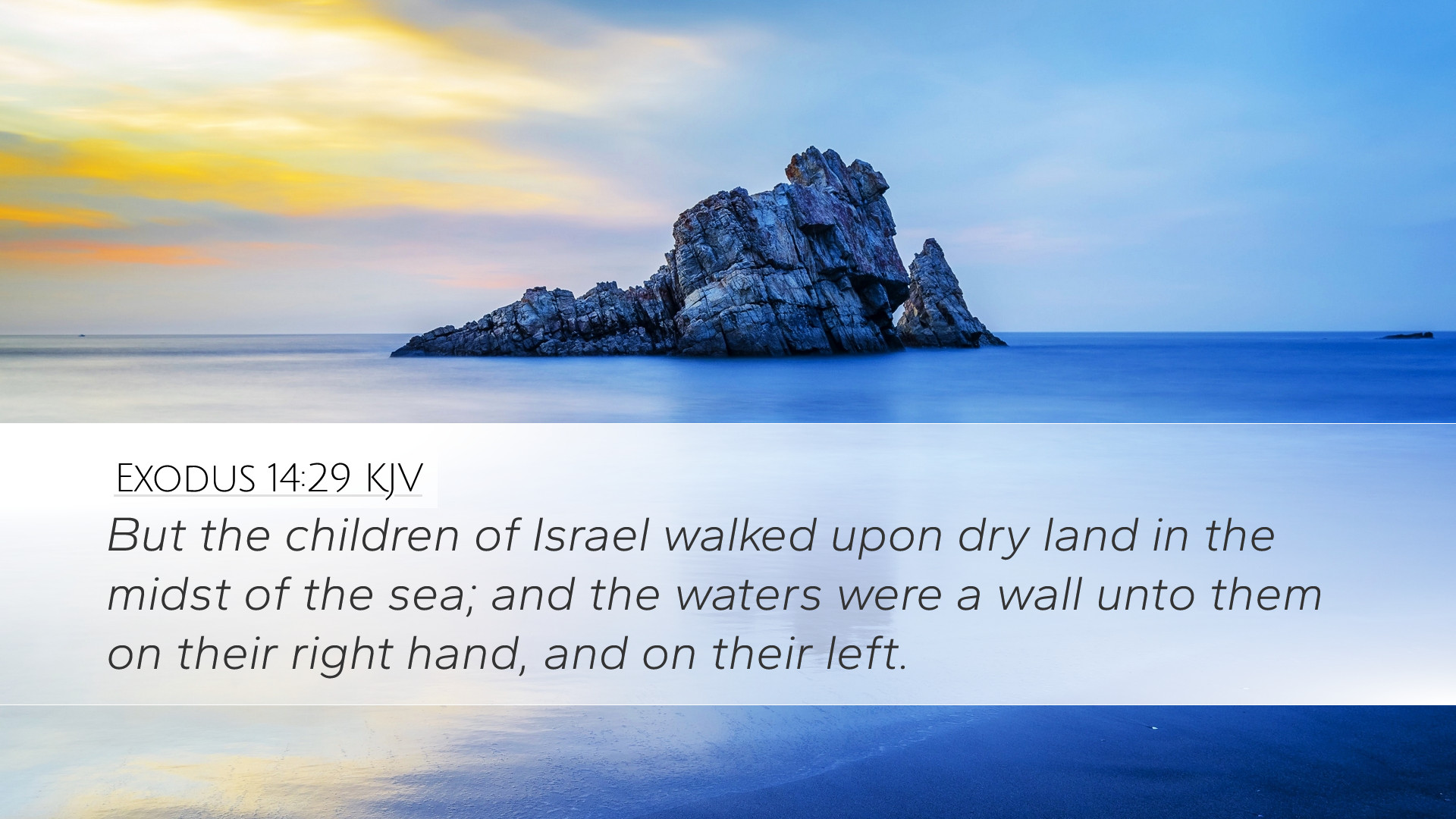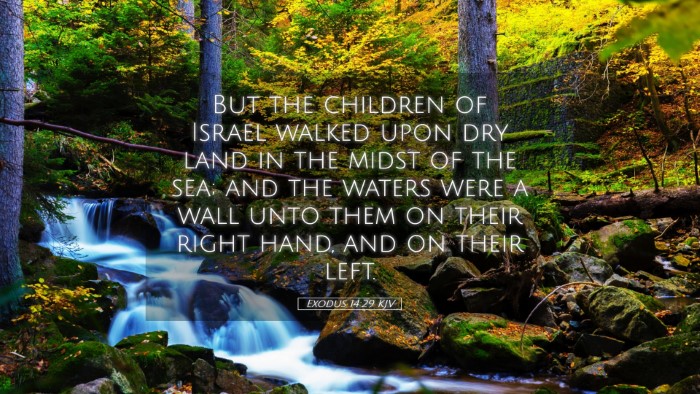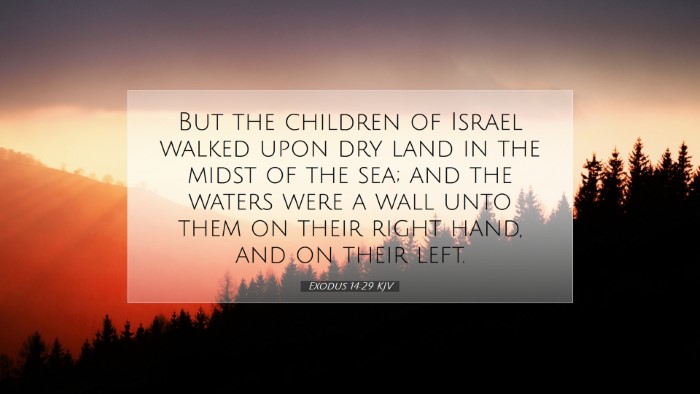Exodus 14:29 - A Commentary
Bible Verse: "But the children of Israel walked on dry land in the midst of the sea; and the waters were a wall unto them on their right hand, and on their left." (Exodus 14:29)
Introduction
This key verse in the narrative of the Exodus encapsulates a turning point in the Israelite journey, depicting a miraculous event where God intervenes in a formidable way. The passage illustrates not only the physical salvation of the Israelites but also serves as a testament to God's sovereignty and faithfulness.
Divine Intervention and Human Faith
Matthew Henry emphasizes God's mighty power displayed in delivering His people. The Israelites' journey through the Red Sea signifies a crucial moment that exemplifies both divine intervention and human faith. This event serves as a reminder to believers that when faced with insurmountable obstacles, faith in God's capability to deliver is paramount.
Spiritual Symbolism
Adam Clarke elaborates on the symbolism inherent in this crossing. The sea represents chaos and danger, while the dry land symbolizes God's provision and safety. The transition from peril to safety mirrors the spiritual journey of believers who, through faith, can traverse life’s challenges, supported by God's promises.
The Significance of “Dry Land”
Albert Barnes notes the significance of the dry land on which the Israelites walked. The absence of water indicates divine sovereignty over nature; God controls even the elements. This miraculous act not only indicates God’s direct power but also signifies His love and concern for His people. The concept of 'dry land' can be viewed as a divine path created through human trust and obedience to God’s instructions.
Obedience in Motion
The act of walking on dry land highlights the necessity of action in faith. As noted in Matthew Henry’s commentary, the Israelites were instructed to move forward despite their fears and uncertainties. Their obedience is a model for believers, demonstrating that faith requires a tangible response to God’s commands.
Divine Protection
The imagery of the "walls" of water on either side serves as a profound reminder of God's protective nature. As referenced in Adam Clarke’s analysis, the walls of water provide both safety and separation from the enemies that pursued them. This protective measure illustrates God's promise to defend His people against those who seek to oppress them.
The Assurance of Salvation
Furthermore, Barnes points out the assurance these "walls" provided. The Israelites could proceed with confidence, knowing that their path was safeguarded by divine intervention. This aspect encourages believers today, as it highlights the security found within God's plan, assuring us that faithfulness to Him will lead to ultimate salvation.
Typology of Baptism
This passage is also rich in typological significance. Henry suggests that the crossing represents a form of baptism, where the Israelites were not only saved from physical danger but were also entering into a new covenant relationship with God. This act of deliverance through water prefigures the Christian baptism, symbolizing the washing away of sin and the beginning of a new life in Christ.
Lessons for Today
As contemporary believers reflect on Exodus 14:29, several lessons emerge:
- The Power of Faith: Just as the Israelites entered the dry land amidst the chaos of the sea, modern believers are called to stand firm in their faith, trusting God even when circumstances seem dire.
- God's Sovereignty: The miraculous separation of the waters serves as a reminder of God’s absolute sovereignty over creation and situations in our lives.
- The Need for Obedience: The necessity of acting upon God’s instructions is paramount. True faith is complemented by action, reflecting obedience to God’s miraculous plans.
- Divine Protection: In facing spiritual giants and adversities, believers can rest assured in God’s protection, much like the Israelites who were shielded from their pursuers.
- Transformation through Deliverance: This passage invites believers to recognize their own deliverance from sin and death, encouraging them to cultivate a deeper relationship with God through Christ.
Conclusion
Exodus 14:29 serves as a powerful reminder of God's faithfulness, providence, and sovereignty. Through the lens of Matthew Henry, Albert Barnes, and Adam Clarke, we see the multifaceted significance of this passage as it highlights pivotal themes of faith, obedience, and divine intervention. For pastors, theologians, and students, this verse encapsulates a foundational truth of the believer's journey: God's power is sufficient to lead us through life's tumultuous seas into the promised land of His faithfulness.


